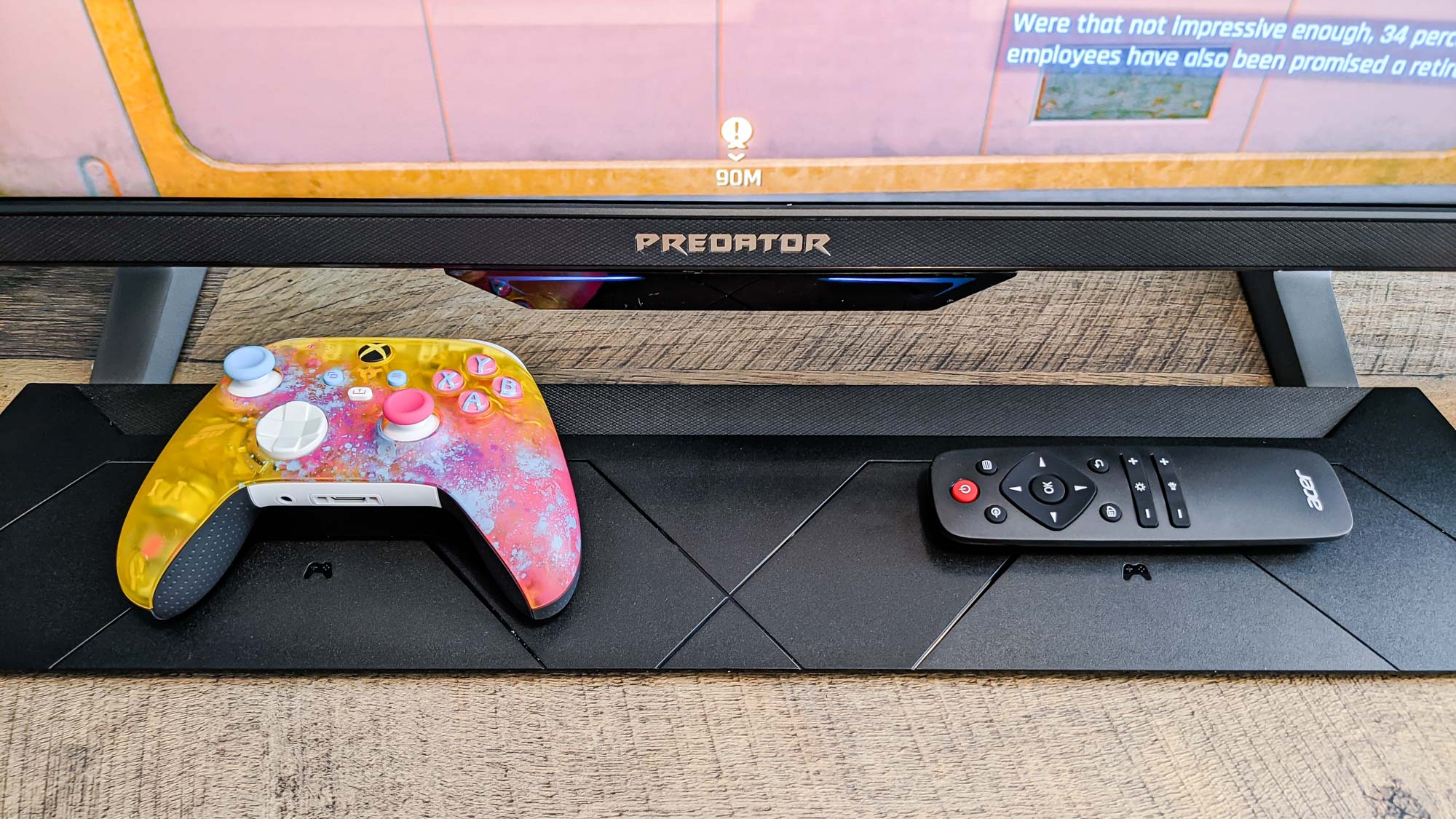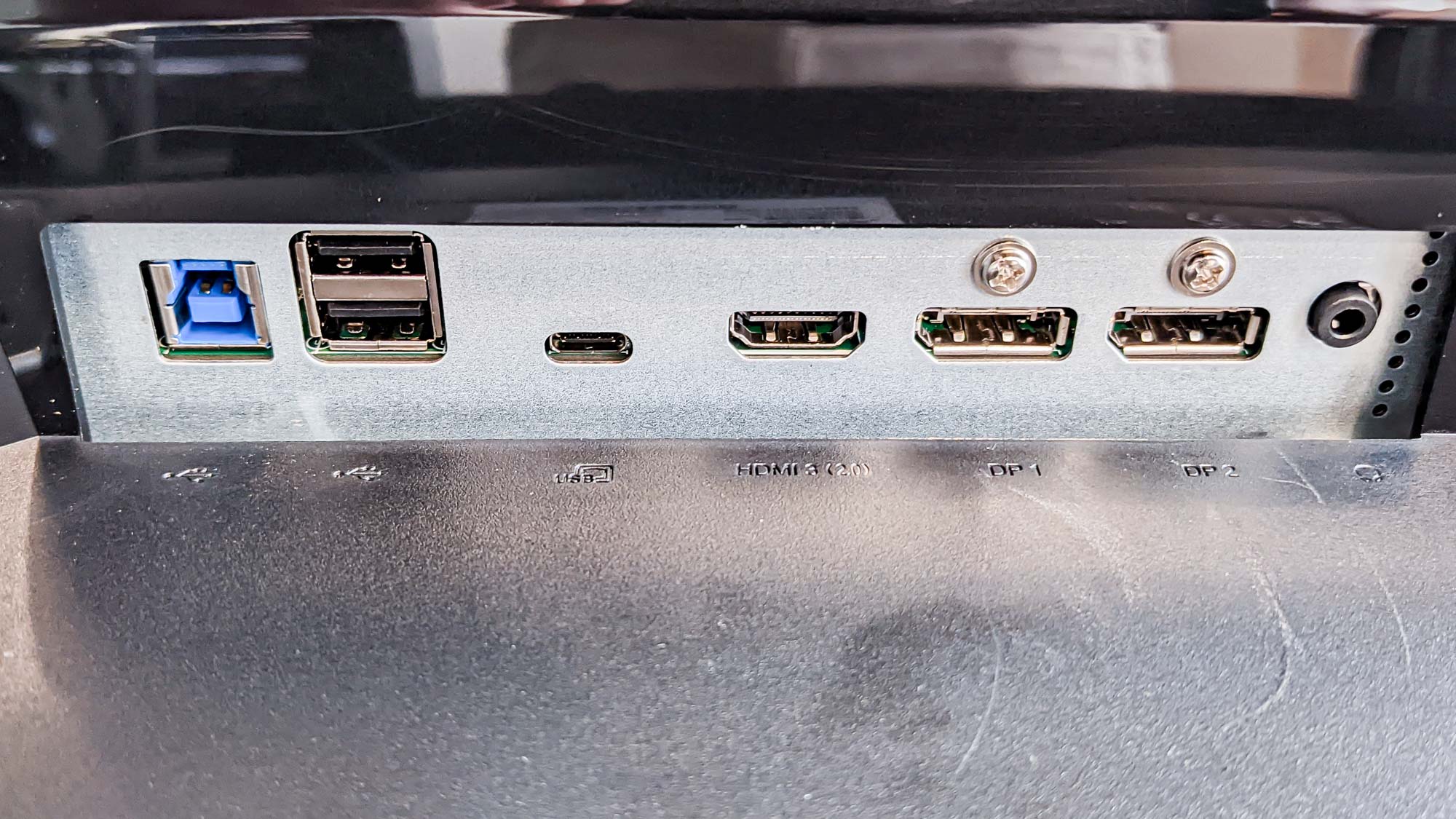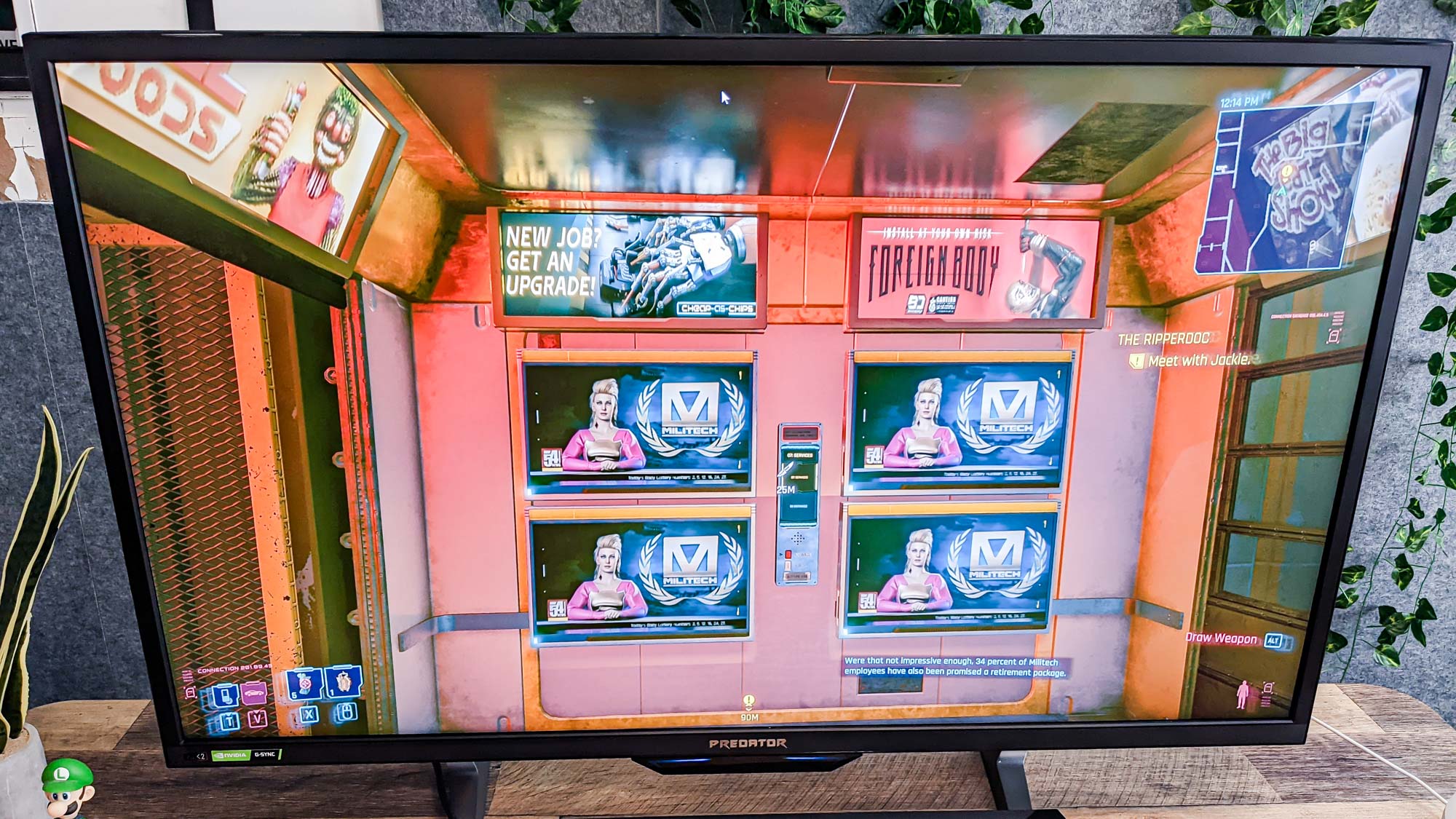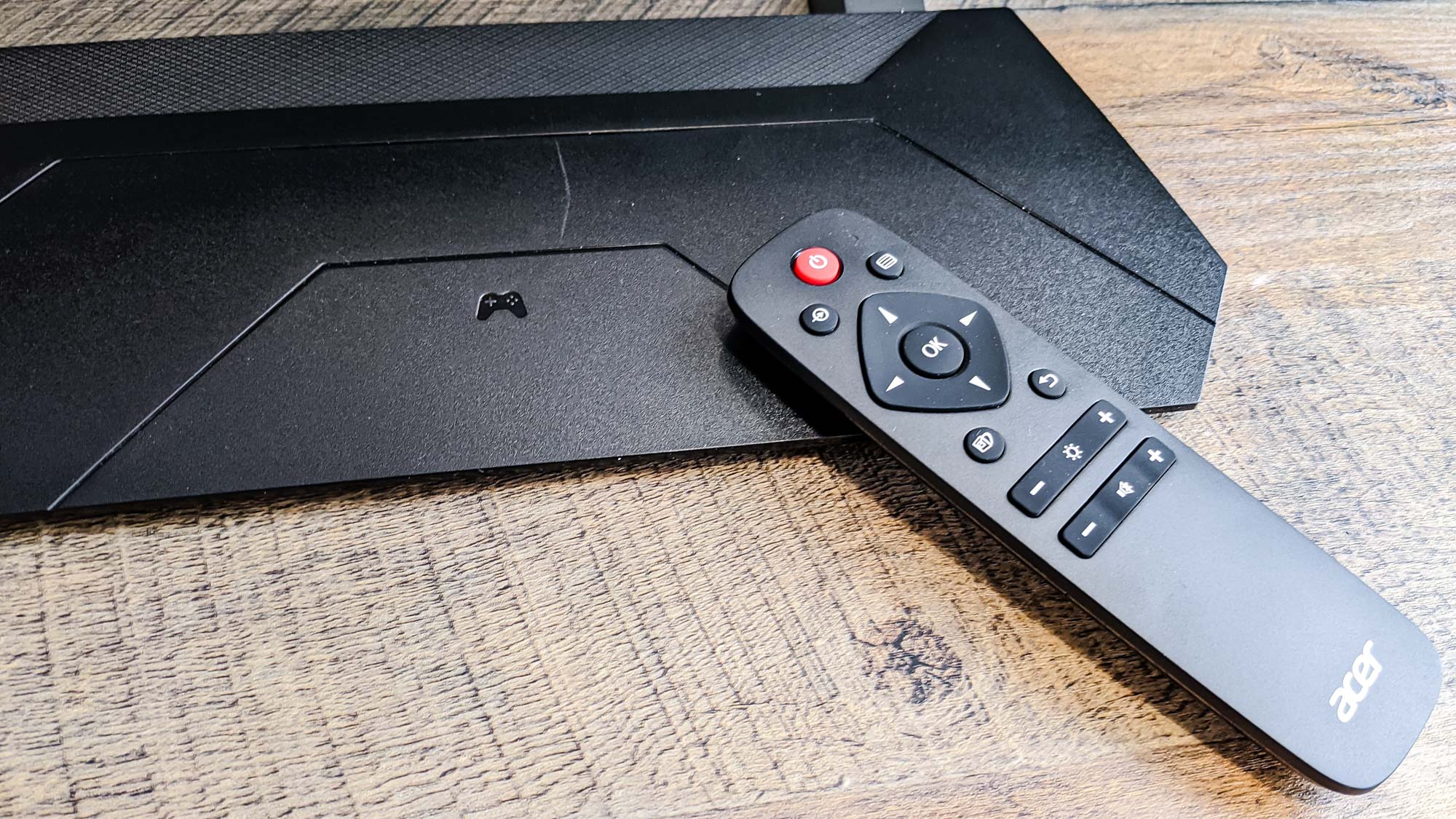Tom's Guide Verdict
As a 43-inch gaming monitor, the Acer Predator CG437K fills an interesting niche in the PC market. But the color, brightness and performance could all be better.
Pros
- +
Fills an unconventional niche
- +
Decent HDR mode
- +
Good with current-gen consoles
Cons
- -
Subpar brightness and colors
- -
Laggy remote control
- -
Confusing model numbers
Why you can trust Tom's Guide
Screen Size: 43 inches
Resolution: 3840 x 2160
Refresh Rate: 144 Hz
Inputs: DisplayPort, HDMI, USB-A, USB-C
Dimensions: 38.5 x 26.5 x 3.9 inches
The Acer Predator CG437K deserves a lot of credit for innovation. This unconventional device aims to split the difference between a living room TV and a gaming monitor, offering PC-level performance with a console-ready design. However, the CG437K is not as impressive as it could be, offering dull colors and a subpar remote control. The overall product is a mediocre execution of a great idea.
If you want to set up a gaming PC in your living room and are distrustful of standard TVs, the CG437K is not without its charms. It’s the right size, it’s got plenty of ports and it plays nicely with HDR systems. On the other hand, the display simply doesn’t look that good, which is a tough sell in such an expensive peripheral.
The CG437K may be worth considering, simply because there just aren’t many gaming monitors in this size range. But at least avoid buying it at full price, if possible (our Acer promo codes can really help with that). Read on for our full Acer Predator CG437K review.
Acer Predator CG437K review: Configurations
The first thing you should know about the Acer Predator CG437K is that it’s not easy to know which one you’re getting. There are two distinct models of the device, but they both have the exact same name, and even the Acer website is not so good at distinguishing the two.
We reviewed the Acer Predator CG437K Pbmiippuzx, which has a 43-inch screen, a 120 Hz refresh rate and HDMI 2.0 inputs. This model costs $1,500.
However, you can also purchase the Acer Predator CG437K SBMIIPUZX, which has a 42.5-inch screen, a 144 Hz refresh rate and HDMI 2.1 inputs. This model costs $1,600.
The two devices are almost identical otherwise, but if you want to hook up a PS5 or Xbox Series X, you’ll want the SBMIIPUZX, as it supports HDMI 2.1. Otherwise, you’ll be stuck at a 60 Hz output, even though both systems support 120 Hz refresh rates on certain games. It’s an unbelievably subtle and complicated difference for the everyday consumer, particularly since the term “HDMI 2.1” does not come up on the official Acer site that compares the two models, or on the Pbmiippuzx’s product page. It’s not at all difficult to imagine a console player buying a monitor without HDMI 2.1.
Get instant access to breaking news, the hottest reviews, great deals and helpful tips.
Acer Predator CG437K review: Design
The Acer Predator C437K is a lot bigger than most gaming monitors. That almost goes without saying, but it’s worth reiterating what makes it so different from most other displays on the market. While most 4K gaming monitors are somewhere in the 28-32-inch range, the C437K is a full 43 inches. This takes it from “desktop” to “living room” territory. If you wanted this monitor to live on a desktop, you might want to rethink your choice — we were physically unable to see the whole thing when we sat in front of it at a desk.

From a physical standpoint, 43 inches is a respectable size for a living room peripheral, and the device looks pretty good. With a plain black chassis, a few LED highlights and a minimalist stand that doubles as game controller storage, the CG437K looks just different enough from a traditional TV to make a statement.

It also has way more ports than a traditional TV. Our review model came with two DisplayPorts, three HDMI 2.0 ports, four USB-A ports and one USB-C port.



The lack of USB-B and 3.5 mm audio ports is noticeable, but not the end of the world, since the back of the device isn’t all that easy to access anyway.
Acer Predator CG437K review: Screen
For such an expensive display, I expected the Acer Predator CG437K to have a much better screen. I tested the device with both a gaming PC and a PS5. With HDR turned off, the color was washed out and dull; with HDR turned on, the color accuracy was much better, but the display looked way too dark otherwise.
Here’s how the Acer Predator CG437K stacks up to some other 4K gaming monitors we’ve tested recently:
| Row 0 - Cell 0 | Brightness (nits) | sRGB Spectrum (%) | Delta-E |
| Acer Predator CG437K (Standard) | 506 | 147 | 0.22 |
| Acer Predator CG437K (HDR) | 700 | 146 | 0.31 |
| Acer Nitro XV282K (Standard) | 185 | 137 | 0.31 |
| Acer Nitro XV282K (HDR) | 248 | 136 | 0.22 |
| Asus TUF VG28UQL1A (sRGB Mode) | 247 | 102 | 0.27 |
| Asus TUF VG28UQL1A (HDR) | 233 | 102 | 0.27 |
This is one of those unusual cases where the benchmarks and our qualitative observations simply don’t match up at all. On paper, the Predator CG437K looks spectacular, with considerably higher brightness and color spectrums than its smaller counterparts. The only big “problem” is that its color accuracy (Delta-E; lower numbers are better) is nothing special in HDR mode, but it’s no worse than the competition.
And yet, when we tried the Predator CG437K for ourselves, it looked dim and lifeless, with inaccurate, grayish colors. I conferred with two other Tom’s Guide gaming experts, who agreed that the Standard mode looked washed-out on PC, and that the HDR mode looked too dark on the PS5. In Standard mode, you can tweak a lot of different settings to get better color levels, but in HDR mode, you’re pretty much stuck with what the monitor gives you.

We're not sure whether it’s better to take our observations or the benchmarks with a grain of salt; all we can say is that after repeated testing and analysis, they simply didn’t match up with one another.
Acer Predator CG437K review: Performance
I tested the CG437K with a variety of games on both the PC and PS5. The monitor handled reds and purples much better than other colors, with Doom Eternal’s rocky hellscapes looking particularly threatening. Blues and blacks, on the other hand, looked much less vibrant, as the lifeless version of Cyberpunk 2077’s Night City demonstrated. Assassin’s Creed Valhalla — usually an extremely colorful game — looked similarly uninspired. Nioh Remastered fared a little better, however, perhaps owing to the large emphasis on gray textures in its levels.

To its credit, the CG437K can handle high frame rates pretty well. Every game I tested on the PC ran at 75 frames per second or more; every PS5 game had a steady 60 fps (at least when set to “framerate” rather than “resolution” modes). The one caveat here is that one CG437K model supports 120 Hz modes on console; the other doesn’t. Check the “Configurations” section and use caution when ordering.
The bottom line is that while a handful of games looked good on the CG437K, nothing looked great — and some games looked much worse than I would have expected from such an expensive display.
Acer Predator CG437K review: Interface
Like other monitors from the same company, the Acer Predator GC437K has a bare-bones menu system that you can use to change inputs, tweak color options and so forth. Once you figure out where everything is, the options are pretty straightforward, although the menus themselves are slow to load and cumbersome to navigate. You can also select different visual presets or control the volume with either the remote control or built-in buttons.
The issue here is that the menu is absolutely tiny, and there’s no way to make it bigger. This isn’t a dealbreaker for a monitor that lives on a desktop, but you’ll probably sit at least 10 feet away from the CG437K. If you want to modify options, even using the remote control, you’ll have to get up from the couch and sit right in front of the TV. It’s an odd and unwelcome holdover from a more traditional monitor design.
Acer Predator CG437K review: Accessories
Since the Acer Predator CG437K is a living room peripheral, it makes sense that the device comes with built-in speakers and a remote control. The only trouble is that neither one is all that good. The speakers are a cut above typical monitor fare, in that they don’t have the same metallic, muddy quality that most other monitor speakers do. Compared to high-end TV speakers, though, they’re nothing special, with flat sound, and unbalanced bass and treble. Since the device doesn’t have Bluetooth, it’s also not easy to connect to a soundbar (although you could conceivably just go through your PC instead).

The remote control is also less functional than I’d hoped. The volume buttons are probably its most useful features, but there’s significant input lag between pressing the button and the monitor parsing your command.

You can also modify a number of menu options, but since the menu font is tiny, it’s difficult to do so without sitting right in front of the TV. The brightness buttons have limited utility, since you can’t use them when the TV is in its standard HDR mode.
Acer Predator CG437K review: Verdict
The Acer Predator CG437K isn’t a terrible machine, but it has too many drawbacks to cost as much as it does. While the device’s impressive 1 ms latency is significantly less than what you’d find in even a high-end TV, the practical benefits may be limited. In our testing, we’ve found that similarly priced TVs generally have latencies of 10 ms in gaming mode, which is more than good enough for everyday play. High-end TVs may also have better color options, or fancy OLED screens. If nothing else, they mostly have better remote controls.
If you know exactly what you’re getting into, the Predator CG437K does at least fill an unusual niche in the gaming monitor world, and it works well enough for most games. Just don’t dive in without at least considering a comparably priced TV, such as the LG C1 OLED, first.

Marshall Honorof was a senior editor for Tom's Guide, overseeing the site's coverage of gaming hardware and software. He comes from a science writing background, having studied paleomammalogy, biological anthropology, and the history of science and technology. After hours, you can find him practicing taekwondo or doing deep dives on classic sci-fi.

